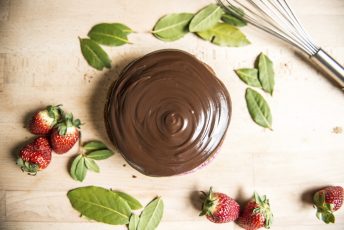Working with cooking chocolate: Tips & tricks
The essential guide to working with cooking chocolate
Text:
Katharina Kuhlmann
Photography:
EcoFinia GmbH |
© Lisa Nieschlag
11 October 2024
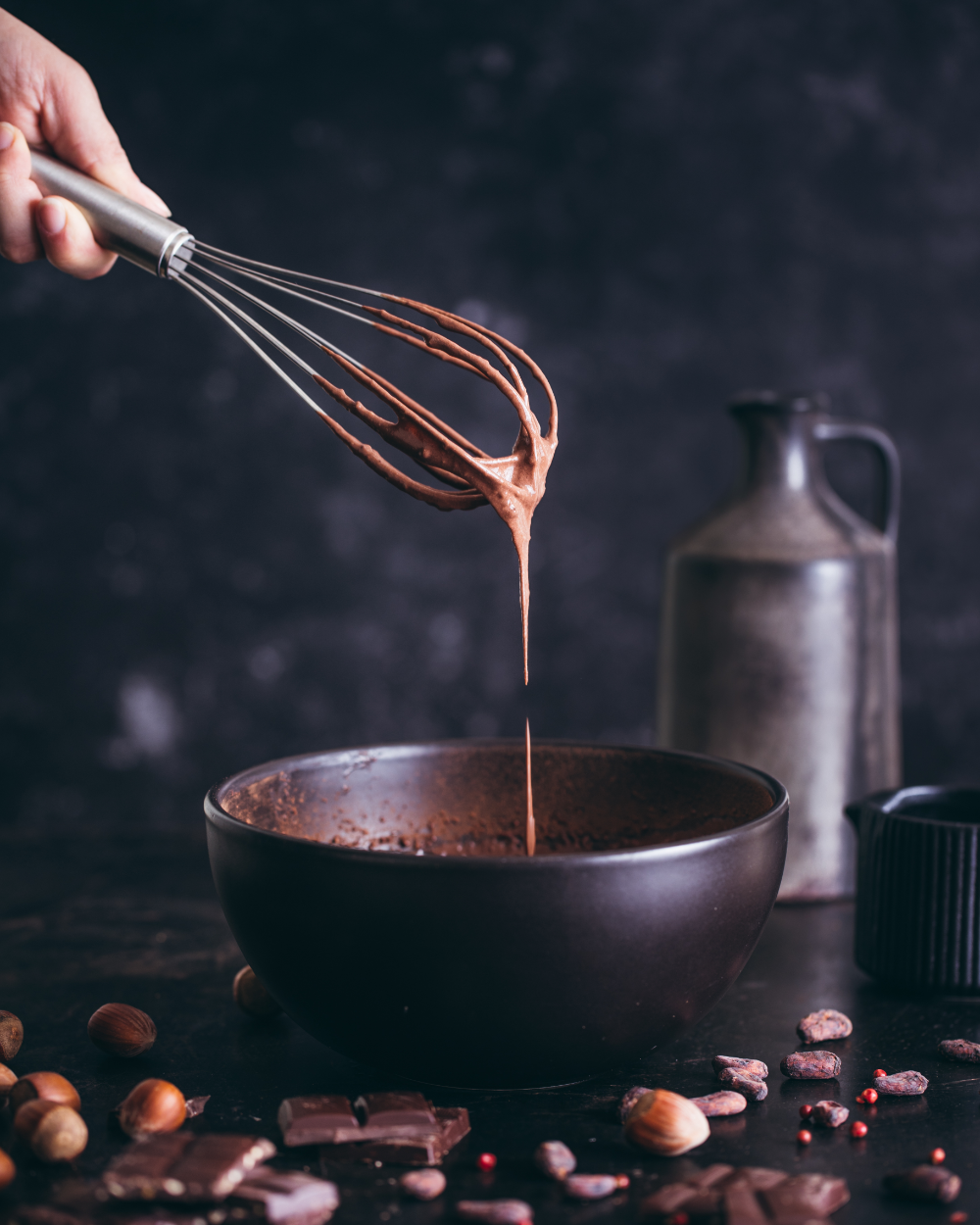
Cooking chocolate allows you to create the very best results when it comes to baking and creating delicious chocolate treats. But did you know that there are lots of common mistakes that people make? There are a number of potential pitfalls in store for ambitious amateur chocolatiers that risk ruining the end result. In this blog, we take a look at the complex chemical processes that take place when working with cooking chocolate, summarise the key information and provide some great tips when it comes to working with cooking chocolate.
Cooking chocolate is a truly versatile ingredient in confectionery and chocolate-making. From opulent cakes to baked goods, as a ganache filling or as a coating for delicious pralines – cooking chocolate is simply irreplaceable for high-quality chocolate-making. But what is so special about cooking chocolate?
The key difference between cooking chocolate and normal chocolate is that cooking chocolate has a thinner consistency when melted. This is due to the higher cocoa butter content, which makes it much easier to work with than ordinary chocolate. Facts & figures: While normal chocolate must contain at least 18% cocoa butter, cooking chocolate must constitute at least 31% cocoa butter according to the German Cocoa Ordinance.
How to temper cooking chocolate – the basics
Cooking chocolate is the ideal ingredient when it comes to creating fine chocolate delicacies. The chocolate needs to be melted correctly and not contaminated to avoid ruining the end result. If things go wrong, you will notice a lack of shine, a crumbly consistency rather than a crisp snap, and a stained, unappetising finish.
One of the most common mistakes: The cooking chocolate coming into contact with water or steam. This causes the cooking chocolate to harden and become unusable. This often happens when melting cooking chocolate in a bain-marie. The best way to melt the cooking chocolate is to use a bowl with a larger diameter than the pan or to use a bowl that fits seamlessly into the pan below.
When melting the cooking chocolate in a bain-marie, you also need to pay close attention to the temperature of the chocolate. A digital kitchen thermometer is ideal for monitoring this. Depending on the type of cooking chocolate, the melting point is likely to lie between 40-45°C. This will prevent the structure of the chocolate from being destroyed.
However, simply melting the chocolate in a bain-marie is no way to guarantee good results. In order to bring the cooking chocolate to the right temperature, you need to follow the different steps of the chocolate tempering process. This is due to the chemical structure of cocoa butter. When the chocolate coating starts to solidify again after heating, the cocoa butter crystallises. The chemical structure of cocoa butter causes different crystal forms to develop. The so-called β-crystals create the correct chocolate texture in the final product, whereas other crystal forms ruin it. As such, when tempering the chocolate, the aim is to destroy the unwanted crystal forms while creating the desired forms. There are three key stages to this:
- The cooking chocolate is melted at 40-45°C, which serves to dissolve the existing crystal structures.
- Once it has reached melting point, the cooking chocolate is then cooled to between 24°C and 29°C, depending on the type of chocolate. This marks the start of the so-called pre-crystallisation process.
- This pre-crystallisation is then interrupted by heating the cooking chocolate to its processing temperature (dark chocolate at 31-32°C, milk chocolate at 29-30°C and white chocolate at 27-28°C). This serves to destroy the unwanted, unstable crystals, which have formed as a result of the pre-crystallisation.
The two methods described below have proven to be particularly effective for tempering:
1. The seeding method
The seeding method is ideal for home baking and for producing smaller quantities of tempered cooking chocolate. Proceed as follows:
- Break the cooking chocolate into small pieces, ideally with a knife.
- Melt two thirds of the cooking chocolate in a bain-marie (up to max. 45°C, depending on the type of chocolate). Monitor the temperature with a kitchen thermometer.
- Remove the bowl from the hot water and quickly and vigorously stir in the remaining third of cooking chocolate. Stir as little air into the chocolate as possible (keep the spoon in the mixture).
- When all of the cooking chocolate has melted and the mixture becomes thick, place it back over the bain-marie and heat briefly. Once the correct temperature (see above) has been reached, remove immediately from the bain-marie. The cooking chocolate is now ready for use. You can briefly return the cooking chocolate to the hot water if it starts to set during use.
2. The tabling method
The tabling method is predominantly used by professionals and is ideal for working with larger quantities of cooking chocolate. You need a marble slab (e.g. a kitchen worktop) for tabling, as well as a metal pallet knife and a metal spatula. The tabling method:
- Break the cooking chocolate into small pieces, ideally with a knife.
- Melt the cooking chocolate in a bain-marie (up to max. 45°C, depending on the type). Monitor the temperature with a kitchen thermometer.
- Pour two thirds of the cooking chocolate on the marble slab and use a pallet knife to spread across the surface with quick movements. Push the chocolate into the middle, cleaning the pallet knife regularly with the spatula.
- When the chocolate begins to harden, quickly stir it back into the cooking chocolate in the bowl. Mix the cooking chocolate together briskly to form a single mass. Ideally, it should already be at the correct temperature. The cooking chocolate is now ready for use. You can briefly return the cooking chocolate to the hot water if it starts to set during use.
Tips:
• Dab the cooking chocolate on your lower lip to check the temperature is correct – it should feel slightly cool.
• You need to work quickly with tempered cooking chocolate. Then gently cool the pastries, chocolates, cake, fruit, etc. at 8-14°C.
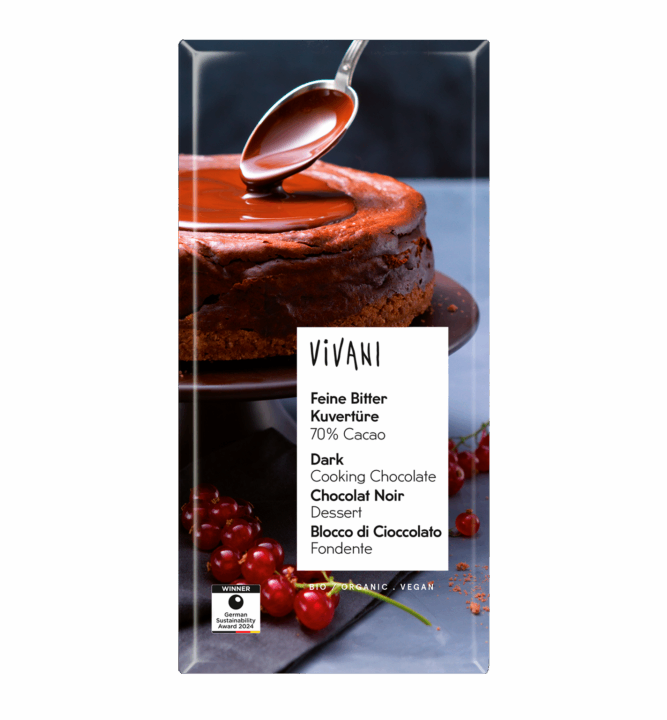
Dark Cooking Chocolate
70 % Cocoa | vegan
Milk Cooking Chocolate
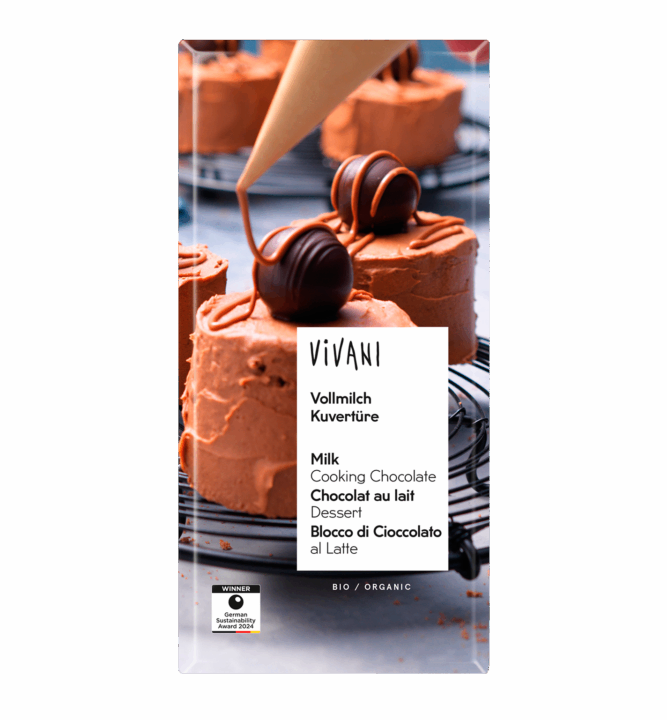
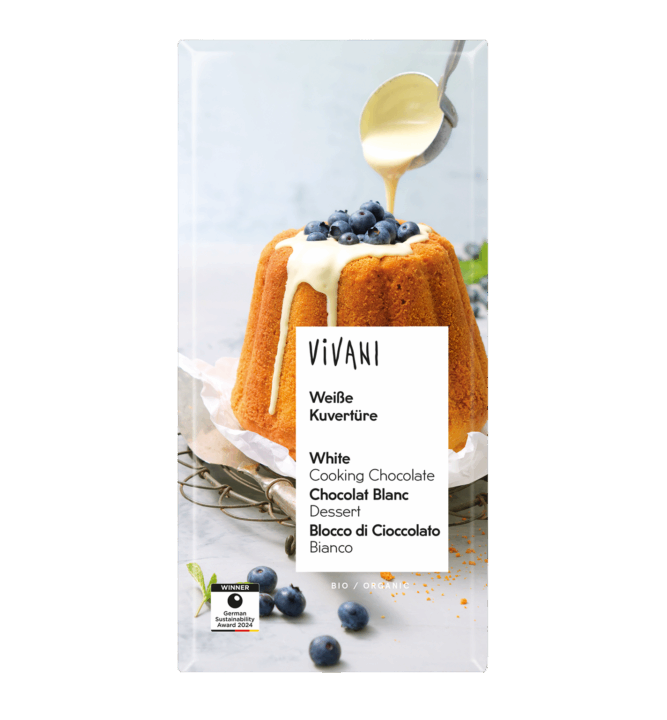
White Cooking Chocolate
Verwandte Artikel
The Chocolate Journal

